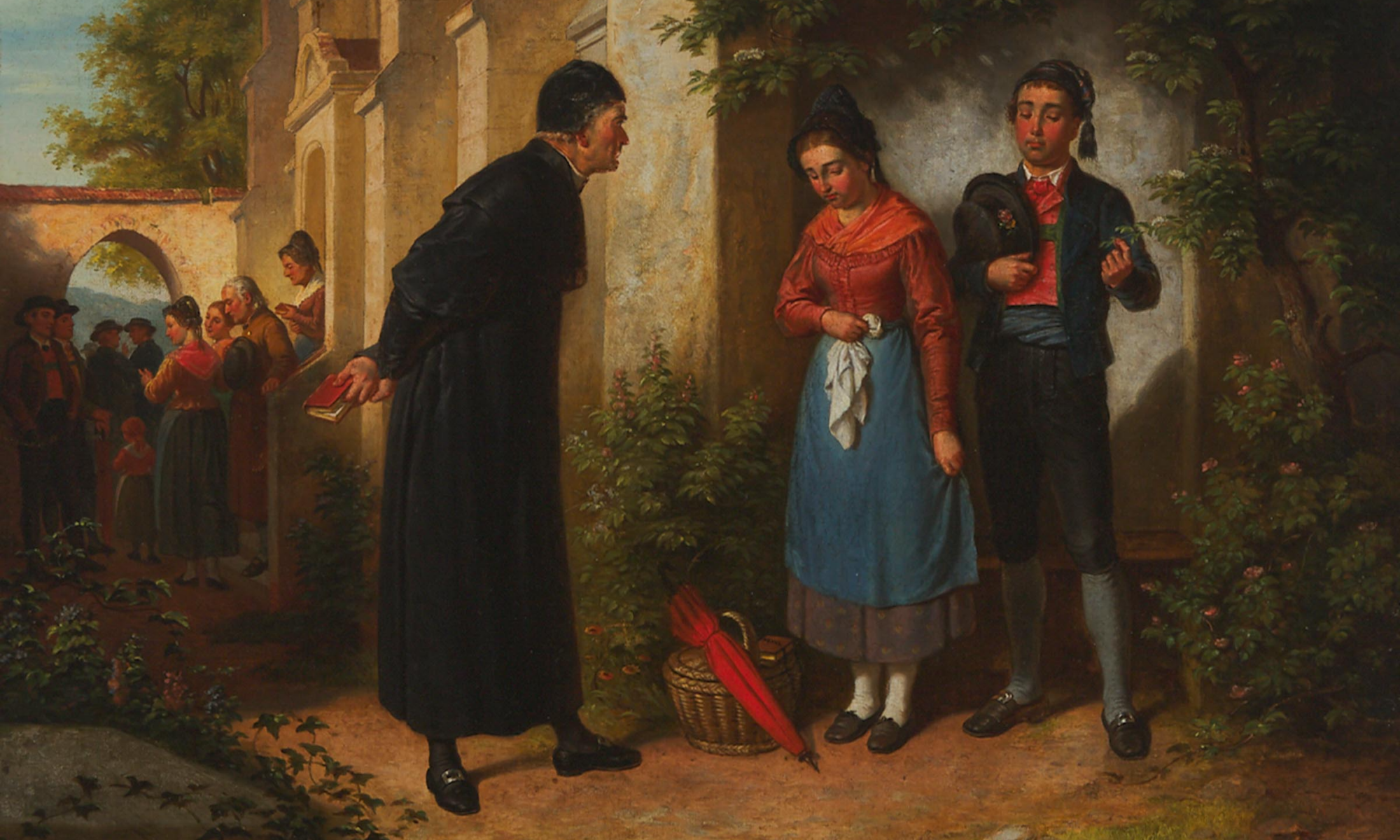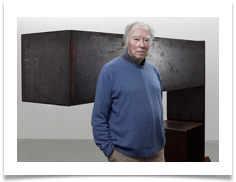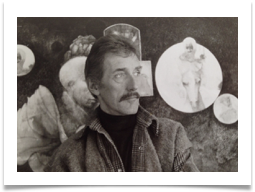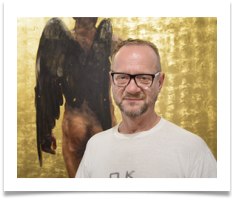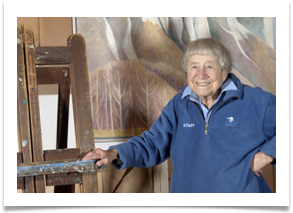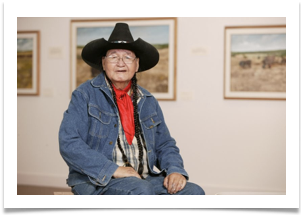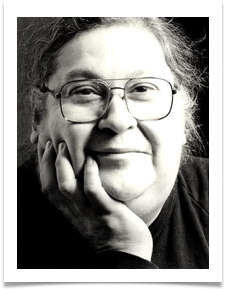Canadian Artist; OC GGA (1950-2022)
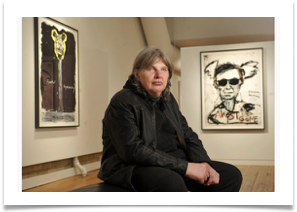
Born in Windsor, Ontario in 1950, John Scott viewed himself as a political activist and blue-collar artist. His work combines counterculture aesthetics of the late 1970s and the 1980s with a sociological ideology that is wary of the consequences and human cost of a capitalist ethos and economy. Through drawings, installations and transformed objects, Scott presents an apocalyptic vision of a world ravaged by war and threatened by destruction. Before Scott completed grade 10, he had left school to work in a factory. He soon became involved in union activity and would later become sensitized to workers’ rights and larger political issues. He was also influenced by the Toronto street culture of heavy rock music and fast cars. John Scott was actually hit by lightning twice. He contracted and surmount Bell’s palsy, one watched in horror as his body gave way – mysteriously – to osteoporosis, crumpling him rapidly into the shape of the letter C and dealing him an immense amount of physical pain as it robbed him of four or five inches of his former height.
Scott’s bold and rough graphic drawings are characteristically crude, often made with the cheapest materials at hand. One of his working methods was to repeatedly soak paper in solvent and develop an image by grinding-in dark pigments, thick black paint, graphite and charcoal. Scott has depicted dark warplanes hovering over destroyed landscapes devoid of human presence. He has also drawn rabbit-like figures to stand in for the anxiety-ridden human being, the harassed victim of the technological threat and militaristic oppression. Heavy dark lines record an impending sense of tragedy and terror.

Perhaps Scott’s best-known work, Trans-Am Apocalypse No. 2 (1993) is a black, modified Pontiac Trans-Am that has text scratched into its surface from the Bible’s Book of Revelations of St. John the Evangelist. Scott’s intent was to suggest that, if the apocalyptic horsemen were to appear today, the muscle car would be a more impressive vehicle for their arrival. Scott considers the car’s substantial link to a macho masculine identity, suggesting that the car is symbolic of flaws of the male sex, which may drive humanity to destruction. As cars also generate pollution, he sees environmental damage as another step toward an apocalyptic world. Scott has being driven by his “imagination” that has been fed by science fiction, the Space Age and Motor City (Windsor) manufacturing might and blight. Sympathy for the worker as a human tool in the global industrial complex pervades what some have called his apocalyptic vision. John Scott was the recipient of a Governor General’s Award in Visual and Media Arts in 2000. John passed away February 17, 2023.
“One of the realities is that any kind of production, especially since the industrial age, is going to involve a great loss of human life. It can be said that blood is the lubricant of the modern industrial world.” – John Scott, 1997
SELECTED COLLECTIONS: Scott works can be found in the collections of the National Gallery of Canada, Ottawa, ON; Museum of Modern Art, New York City, NY; Art Gallery of Ontario, Toronto, ON; Art Gallery of Stratford, Stratford, ON; Art Gallery of Peel, Brampton, ON; Saint Louis Art Museum, St. Louis, MO; Canada Council Art Bank, Ottawa, ON; Museum London, London, ON; Department of External Affairs, Ottawa, ON; BOS Insurance, Mississauga, ON; Hamilton Art Gallery, Hamilton, ON; Windsor Art Gallery, Windsor, ON; University of Toronto, Toronto, ON; Robert McLaughlin Gallery, Oshawa, ON; University of Lethbridge Art Gallery, AB; Rodman Hall Arts Centre, St. Catherines, ON; Carleton University, Ottawa, ON; Arts Gallery of Vancouver, Vancouver, BC.
The record price for this artist at auction is $5,625.00 for The Beast from the Sea, Trans Am Apocalypse, sold at Heffel in 2020.
